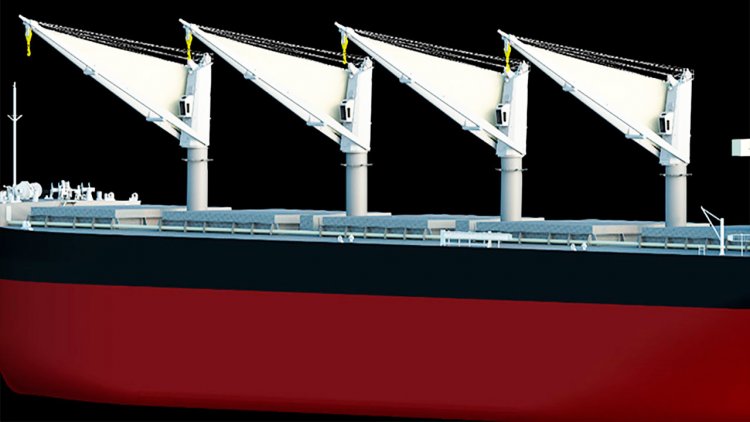MOL to develop new energy-saving sail to boost ship propulsion
The joint R&D project aims at reducing greenhouse gas (GHG) emissions from vessels while underway, by unfurling the sail placed on ship

Mitsui O.S.K. Lines has announced that MOL, MOL Drybulk, Oshima Shipbuilding and Iknow Machinery have reached an agreement on joint research and development of the "Iknow Delta Sail Crane", a sail that can be mounted on ships' cargo handling cranes and similar equipment to boost propulsion force.
The joint R&D project aims at reducing greenhouse gas (GHG) emissions from vessels while underway, by unfurling the sail placed on ship such as triangular parts of existing cargo handling cranes to use offshore winds to provide additional propulsion force.
Many MOL Drybulk-operated vessels are equipped with cargo handing cranes, and the company plans to study the installation of the Delta Sail on a broad range of ship types, such as bulkers, wood chip carriers, and multi-purpose vessels.
Through five initiatives, MOL group is working to achieve the Medium-to long-term targets in the 'MOL Group Environmental Vision 2.1', including "achieve net zero GHG emissions by 2050."
Through this joint R&D project, MOL group strives to reduce GHGs in clean energy supply chains with industrial leaders by one of the initiatives "Enhancement of Energy-Saving Technologies" in addition to our existing environment-friendly technologies using offshore winds such as Wind Challenger/Wind Hunter Project.
This has the potential to achieve 5% to 8% reduction in GHG emissions by reducing bunker oil consumption through the use installation of a telescoping hard sail that converts wind energy to propulsive force.
MOL has already placed an order with Oshima Shipbuilding for construction of the first vessel to be equipped with the Wind Challenger—a coal carrier, slated to start operation in 2022 supplying Tohoku Electric Power Co.,Inc.
The ultimate zero emission driving project, which combines wind propulsion sailing technology and wind energy converted to generate a stable supply of hydrogen.



























